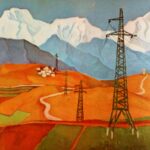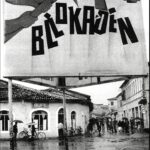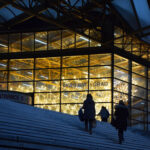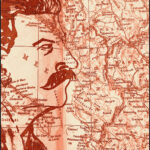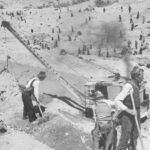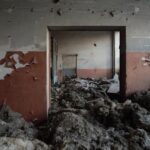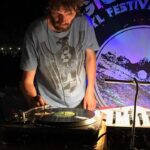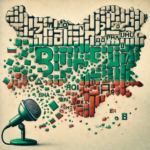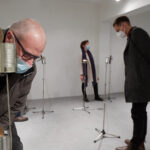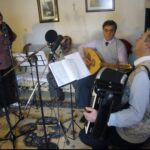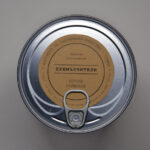Empowering and Activating through Education
Yugoslav Architectural Heritage in Post-Socialist Times
Over the years, I have, together with my team, gathered around the association BAZA – Spatial Praxis Platform, [1] developed and taken part in projects focused on promoting the Yugoslav architectural and urban heritage amongst our fellow citizens in Novi Sad and the wider international circles. It is commonplace that this type of built environment, dating back to the end of WWII till the 1980s, is still “on hold” while waiting for the officially protected heritage status. Generally, we refer to it as an unabsorbed [2] heritage whose “acceptance” and “absorption” are prolonged due to complex intertwined versions of the positive and negative consequences of the socialist regime and ideology on our divided ex-Yugoslav countries. In all the endeavours regarding this topic – in our published works, projects and initiatives – we advocated a better understanding and acceptance of this body of work as a precious, unavoidable and unerasable layer of our built history. Our projects tell stories about the importance of education and sensitize the project’s participants so that they accept and continue to care about the invaluable Yugoslav architectural heritage, on the one hand, and develop an audience that understands and resonates with this crucial topic on the other.
Simultaneously to these processes, we were working on spreading this idea among younger people, predominantly students, through our work at the University of Novi Sad – Department for Architecture and Urban Planning at the Faculty of Technical Sciences. Working in architecture education for the last twenty years, I have introduced a line of courses in Creative Research at all levels of studying programmes (BA, MA, PhD) conducted by the University of Novi Sad, as well as courses in Poetics of Space and Liminal Spaces for the PhD programme in Polymedia Art, conducted by the University of Arts in Belgrade. All of these courses promote some forms of architectural and urban heritage and creatively reinterpret them, only to show the vast potential hidden in their layers. These layers, rediscovered through a creative process, open new options for reconsidering the existing built fund and opening it for new and unforeseen futures.
Aiming to educate young professionals sensitive to the marginalized and neglected architectural heritage of the 20th century so they would naturally continue to care once they leave the University and start to practice architecture, we are striving to generate change in youth perspective on this delicate matter. In this essay I will introduce one of our projects and the methodology that we use in creative research and creative interpretations of the modernist legacy. This project is an example that illustrates the change in understanding, caring and further promotion of the architectural heritage of the 20th century in Novi Sad, Serbia.
“The Railway Code” – a Creative Approach to the Old Station
In the Spring of 2021, while anticipating the upcoming reconstruction, the Novi Sad railway station was practically out of function. At that time, working at the minimum of its functional and spatial potential, the building still reflected some of the old modernist glow. Designed by Imre Farkaš in 1959 and officially opened in 1964, over many decades, the structure represented an outstanding case of regional modernism in Novi Sad. The built-in ideas of a promising modern future for the Yugoslav railway spread around as an optimistic view of the whole city’s modernisation, marking the station – the starting point of the Novi Sad main Boulevard – as a symbol of progress. With the decline of railway transport and the degradation of the country’s railway network, the Novi Sad station was dilapidated rapidly. The additional functions accompanying the primary transportation were closed one by one: the cinema hall, restaurant, buffet, gallery space, and office spaces. Shortly after, the citizens were left without additional content at the station. Simultaneously, the trains’ frequencies drop off. The passengers were forced to choose other ways of travelling, leaving the station hardly working for years.
Stories and comments about the necessary reconstruction existed for a long time. Still, it was not until 2016 when a group gathered around the Association of Novi Sad Architects decided to organize the yearly exhibition of the Association – The Salon of Architecture Novi Sad – in the abandoned spaces at the railway station. Marking the building as a place of the event, they brought a massive audience inside the half-abandoned building, sparking once again the interest of the citizens and the city’s decision-makers. Some other actions followed, emphasizing the importance of the station building. In 2021, with the reconstruction in sight, the building was still waiting for the first indications of its future form. We have chosen precisely this moment for the site-specific project planned to happen inside the building – when the structure’s fragility and dilapidated layers were still showing, offering possibilities for the new readings.
During a four-days’ workshop taking place at the railway station Novi Sad in May 2021, a group of students led by three mentors – Bojan Novaković, an academic sculptor; Višnja Žugić, an architect; and myself, have spent precious time in a creative investigation of all the accessible, visible and hidden spaces of the complex, discovering its real and imagined layers and collecting found objects, the so-called “spatial proofs”. This investigation led to rethinking, redrawing, analysing and retelling the architectural, programmatic and aesthetic characteristics of the station building and its past, present, and anticipated future through individual artistic interpretations of the topic. This creative endeavour offered reimagination through personal interpretative narratives, resulting in several big-scale digital collages and one ready-made object. We used a hybrid site-specific methodology developed over ten years during this process. Based on a well-known approach in site-related practices – the narrative embodiment, which is practically experiencing and feeling the site with both human minds and bodies, the hybrid method developed further through “delayering” [3] of space – recognising, defining and peeling off layers of all sorts, physical and immaterial, real and unreal, present and imagined and creatively engaging with them. Recognition of particular experiences developed in the building at the time of the workshop led further into separate treatment of spatial phenomena, such as voids, materials, reflections, parallels, rhythms, shadows, juxtapositions, objects, traces, marks of human presence, evidence of human everyday lives, etc. Developed further as individual narratives, these phenomena became personal stories, translating a human voice and human experience into art forms. This essay presents some of the outcome.
In her work “A Stamp Drawer”, Bojana Uzelac explored traces of the employees’ everyday work at the railway station. When she accidentally stumbled upon an old desk in an abandoned office, offering a treasure of traces in its surfaces and elements, Bojana carefully documented a determined pattern in which drawers were used. She collected all the available traces of that usage. Further, she explored them through digital interpretations that overlapped with the materials built in the station’s floors and walls. This resulted in abstract digital collages rich in textures belonging to the building and the processes it hosted. Relatable in the outcome but somewhat different in the approach, Anja Marjanović’s project focused on the materials built into the structure, their types, shades, gradients, conditions, collapse, repetitions, and an overall colour code. Titled “On Void”, her work dealt with the actual physical materialization of the almost non-existent usage of this symbolic structure. Anastasija Radovanović investigated the phenomenon of transparency and reflection through digital photography. Looking through all the windows, glasses and openings in the building, she uncovered spaces “dictated by light”. Through the camera lens, she paired situations discovered inside and outside the building, letting the more decisive influence prevail. The exposed depth of the space brought along the promise of a possible future use. Iva Pejčić offered a different view on reflection in the station building. Turning away from the windows and reflective walls, she searched for traces of esprit in small things on a micro level, looking for the different perspectives in life besides humans. The reflective surfaces she chose were hidden behind closed doors and furniture, covered in stains, showing an unconventional perspective and bringing along a layer of nostalgia. Other projects that came as the outcome of the workshop included topics of uncontrolled and controlled elements of living plants and other alternative forms of life inhabiting the station’s space and an overlapping construct of the graphical past, present and future of the building. [4]

“A Stamp Drawer” – digital collage by Bojana Uzelac
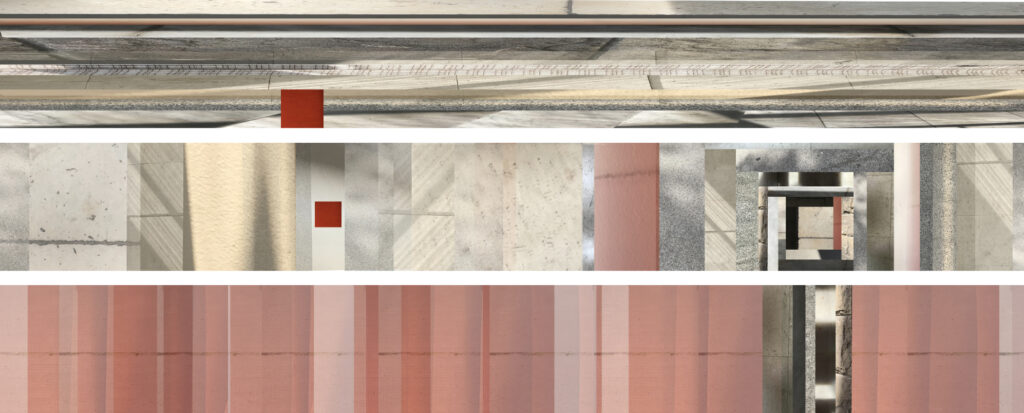
“On Void” – segment of a digital collage by Anja Marjanović
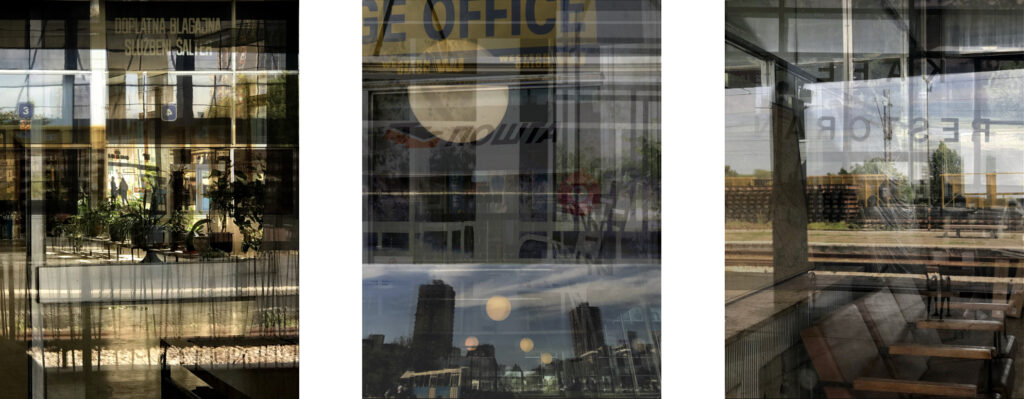
“The Promise” – segment of a digital collage by Anastasija Radovanović
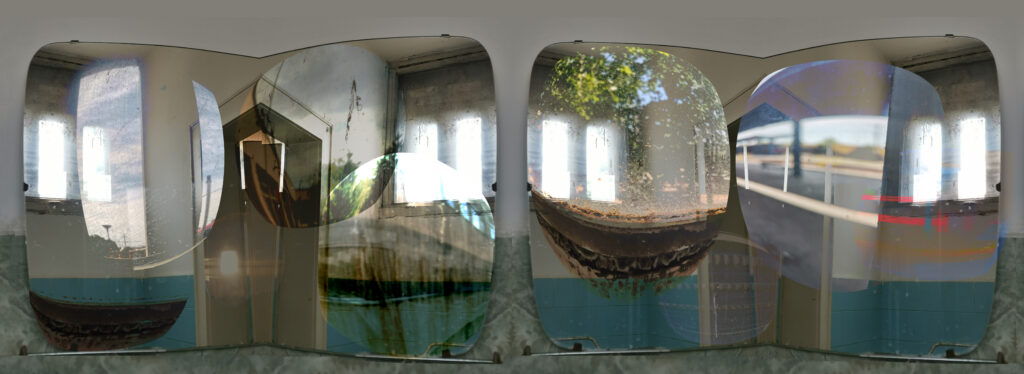
“Flying Perspective” – digital collage by Iva Pejčić
This selection of projects has a specific purpose. Besides showing delicate and very personal approaches to the topic of the reimagination and reinterpretation of the partially ruined and abandoned modernist building, the collection brings to light a subtle perspective of seeing through negligence, decay and marginalisation, thus dramatising the still-existing architectural potential in both significant and seemingly insignificant details. The workshop’s outcome was an assemblage of the individual projects brought together under the collective title “The Railway Code”. It was selected for the exhibition “Novi Sad—Modern City,” [5] which focused on the city’s modernisation in socialist times. The exhibition took place in February 2022 at one of the most prominent symbols of Novi Sad modernisation: the “Sports and Business Centre Vojvodina” (SPENS) building.
Furthermore, the process of deepening students’ interest in the topic of the neglected architectural modernist heritage continued. All four selected authors whose projects are presented here decided to make another endeavour that evolved into their master thesis projects. This time, the abandoned modernist building decaying in the very centre of the city was the famous Studio M, designed by Pavle Žilnik in 1959 and until recently used by the Public Media Institution RTV – Radio Novi Sad. Through their phenomenological research and architectural approach, this group of students delivered personal architectural stories, wrote narratives, made creations and designs that fundamentally opposed the official city’s attitude about the inevitable reconstruction. This project was awarded the highest architectural recognition for architecture students in Serbia – the ‘Award for the Most Successful Students’ Project in 2021’ issued by the Union of Architects of Serbia. It was also rewarded a HERSUS Prize on Modern Heritage issued by CREhAR Catedra UNESCO in May 2023. In addition to that, it was shortlisted and exhibited at numerous architectural exhibitions and events in the region, promoting fresh youth perspectives on Socialist architecture.
References
[1] https://mismobaza.org
[2] Dragana Konstantinović and Slobodan Jović. 2021. “Metacode of Modernism: Novi Sad the Modern City.” In Conference proceedings Ana Pajvančić Cizelj (ed) Post-socialist Transformation of the City. Novi Sad: Faculty of Philosophy: (67-82) 78.
[3] Palinhos, Jorge, Miljana Zeković, Višnja Žugić, Attila Antal, and Eric V. Dela Cruz. 2020. “Transformative Power of Spatial Memory: An Interdisciplinary Approach to Space as Performance.” Theatre and Performance Design 6 (1–2): 130–46. doi:10.1080/23322551.2020.1771941.
[4] Beside the named authors, other participants in the workshop were their colleague students Nikola Vulović, Sara Krnjajić and Borjana Božić.
[5] More on the exhibition: https://mismobaza.org/novi-sad-moderni-grad/.

